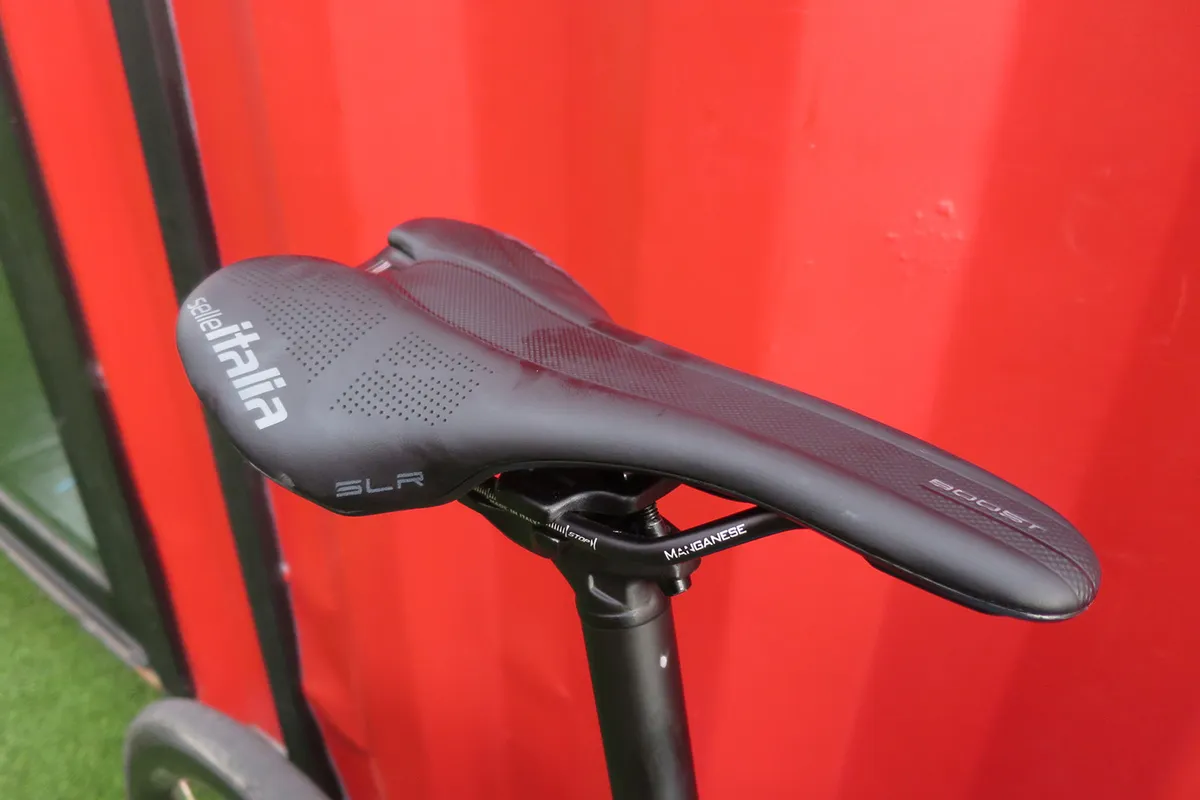Ridley’s all-new Grifn all-road bike is a bold step for the Belgian brand.
Why? It has to compete with a range of Ridley bikes including the racy Kanzo Fast gravel bike, the big-clearance, slack-geometry Kanzo Adventure and the cobbled-classics proven Fenix endurance bike.
So, with the Grifn claimed to be equally at home on fast gravel as it is on fast roads, could it replace both your endurance bike and gravel bike?
Ridley invited BikeRadar to Tenerife to get a first taste of the new Grifn, to see if it really is an ‘N+1 killer’.
My first ride on the Grifn took in a gravel ascent of the island’s Montana Negra that contained everything from pine-needle strewn forest tracks to lunar-like black volcanic sands and hard-packed fast trails.
This was followed up with a road ride around the legendary Los Gigantes, with plenty of climbing and swift, smooth switchback turns to boot.
Ridley Grifn first impressions
At a glance, the Grifn is a great-looking bike.
Whereas both the Kanzo Fast and Fenix share a curved top tube and aero influences from the Noah aero bike, the Grifn has a silhouette derived from the lightweight Helium road bike.
This brings slender tubing, a similarly slender straight fork and skinny dropped stays (albeit, not as extreme as the Kanzo’s).
The internal integration of the brake hoses using Ridley’s F-steerer tech keeps the Grifn looking clean and tidy.
Despite this, there are a wealth of fittings that are intended to make the Grifn one of the most versatile all-road bikes available.
With dual-position bottle cage mounts on both the seat tube and down tube, it enables you to fit a large frame bag should you want to take the Grifn for a spot of bikepacking.
The flattened top and undersides to the top tube are said to add some stability when both a frame bag and top tube bag are in place. Neatly, the top tube mounts can be hidden under a flush-fit cover.
A third set of bottle bosses are found under the down tube, bolstering the bike’s long-haul credentials. Year-round riders have been considered too, with full mudguard mounts – there’s even an optional set of dedicated guards designed in conjunction with Curana.
Finally, Ridley has included internal routing through the fork for a front dynamo hub, plus internal routing to enable it to power a rear light (with an exit port for the cable on the underside of the top tube).
Tyre clearances are usefully broad: 700 x 38c with a 2x setup, and 700 x 40c with a 1x drivetrain. Naturally, with mudguards fitted the clearance drops to 32mm-wide tyres.
A claimed weight of 990g for the frame (size medium) and 445g for the fork is in the right ballpark for what I’d expect of an endurance bike or racy gravel ride.
By comparison, Cervélo’s Caledonia weighs in at 1,031g for the frame and 432g for the fork (size large). Trek’s latest Domane RSL frame and fork weigh around 1,600g together.
My test bike in Tenerife featured the same groupset and core build – SRAM Rival AXS, the Forza one-piece bar and stem, Forza Cirrus carbon seatpost, Selle Italia SLR Boost saddle, and Forza Legante G carbon wheels.
Ridley simply switched the tyres for the gravel and road routes: 35c Vittoria Terreno Drys on the rough stuff and 28c Vittoria Corsa 2.0s on the blacktop.
My size-large test bike with road bike tyres fitted tipped the scales at a respectable 8.88kg. In gravel spec, it weighed 9.24kg.
Ridley Grifn geometry
| | XS | S | M | L | XL |
|---|---|---|---|---|---|
| Seat angle (degrees) | 74.5 | 74 | 73.5 | 73.5 | 73 |
| Head angle (degrees) | 71.5 | 72 | 72 | 72 | 72 |
| Chainstay (mm) | 420 | 420 | 420 | 420 | 420 |
| Seat tube (mm) | 470 | 500 | 520 | 545 | 570 |
| Top tube (mm) | 525 | 545 | 565 | 585 | 605 |
| Head tube (mm) | 115 | 140 | 165 | 195 | 215 |
| Bottom bracket drop (mm) | 75 | 73 | 73 | 71 | 71 |
| Wheelbase (mm) | 993 | 1,005 | 1,021 | 1,043 | 1,058 |
| Stack (mm) | 540 | 563 | 587 | 614 | 633 |
| Reach (mm) | 375 | 383 | 391 | 401 | 412 |
Ridley Grifn first ride impressions
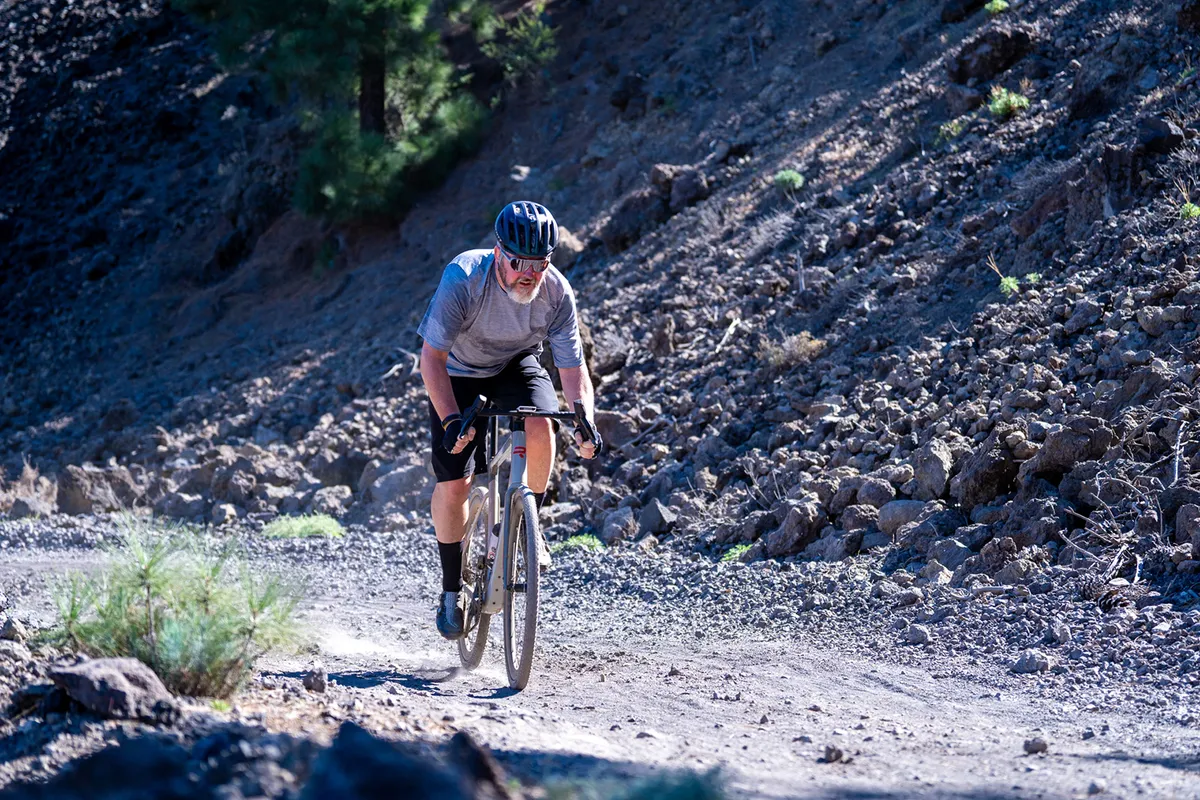
Whatever was thrown at the Ridley Grifn during my initial rides, the bike felt good.
The wheelbase is long enough to be stable on choppy and rutted, yet rapid, terrain. This seems to translate well when carving through hairpins and corners on mountainous descents.
When it comes to ascending, the frame and fork certainly feel road-bike stiff. The addition of the light (enough) wheels and excellent road tyres will have made a big impact here – I think it climbed as well as Ridley’s own Fenix endurance bike.
That Ridley has kept the chainstay length down to 420mm may limit the Grifn’s ability to fit the chunkiest of tyres, but the upside is it keeps the bike feeling as nimble as a road bike when cornering at speed.

The on-bike feel is firm, with a ride position that feels much like a sporty sportive bike.
It’s forgiving too, with lots of compliance coming from the rear end. The Grifn simply wafts over tarmac, while the occasional cracks, lumps and bumps are taken with consummate ease.
On gravel (and with suitable tyres fitted), the Grifn contains vibrations and rougher edges well.
The Forza Cirrus Pro one-piece bar serves to stiffen up the front a little more than the rear. That said, I found vibrations were well muted by the great-quality bar tape, and the Selle Italia Boost SLR saddle is a good match for me.
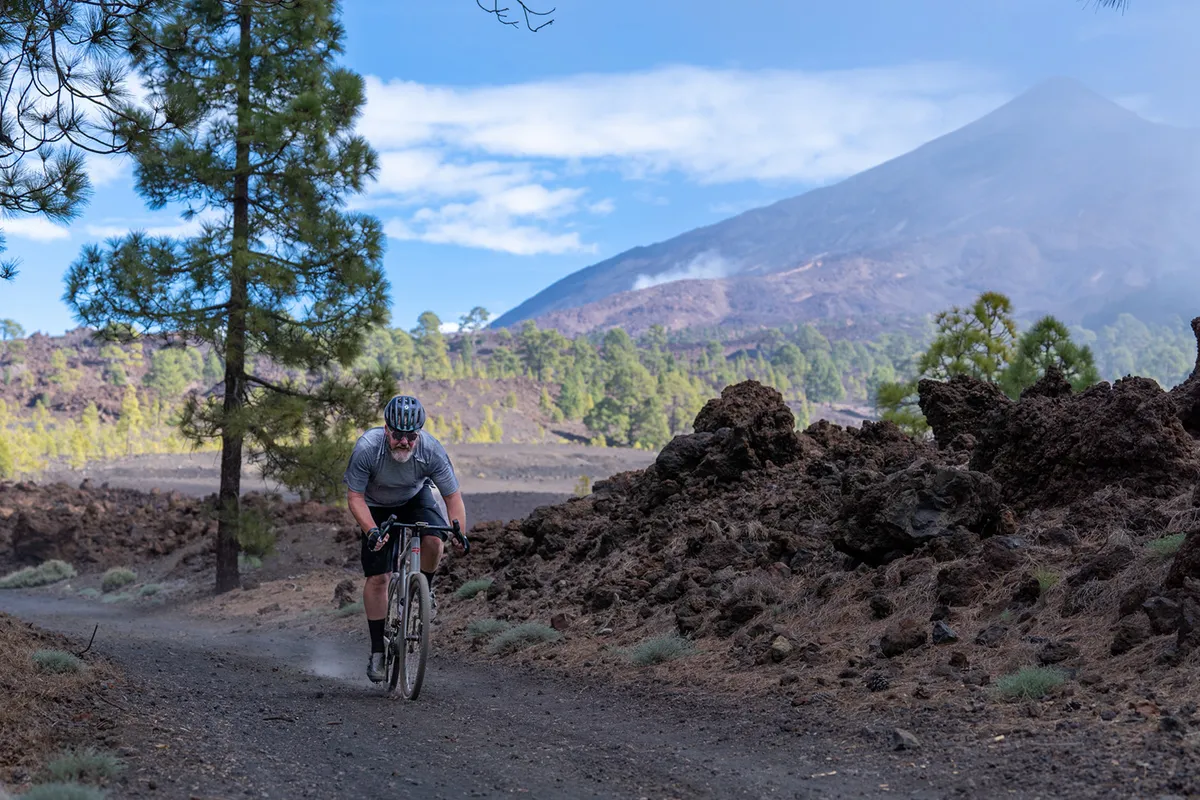
The Cirrus Pro is well shaped, though I’d have preferred a wider option than the 40cm (paired with a 100mm effective stem length) fitted on my large test bike.
The 16-degree flared drops helped and made me feel more at home than on the hoods, but I’d like to see more options from Ridley for bar-stem width and length combinations, especially for larger-sized bikes.
The 72-degree head angle is steeper than your average gravel bike, and perhaps a degree or so more relaxed than a road bike. The Grifn feels like a match for racy gravel bikes such as the Vielo Alto, yet – on the other end of the scale – not far removed from classic endurance bikes such as Giant’s venerable Defy.
SRAM's Rival AXS (complete with spring-loaded clutch rear derailleur) is a great choice for a bike that will spend plenty of time on gravel.
The built-in chain management ensured I had no chain drop or slap issues riding the rough, rutted volcanic rock of the lower slopes of Montana Negra. SRAM’s single-button shift logic is easy to use even when you're being bounced around too.
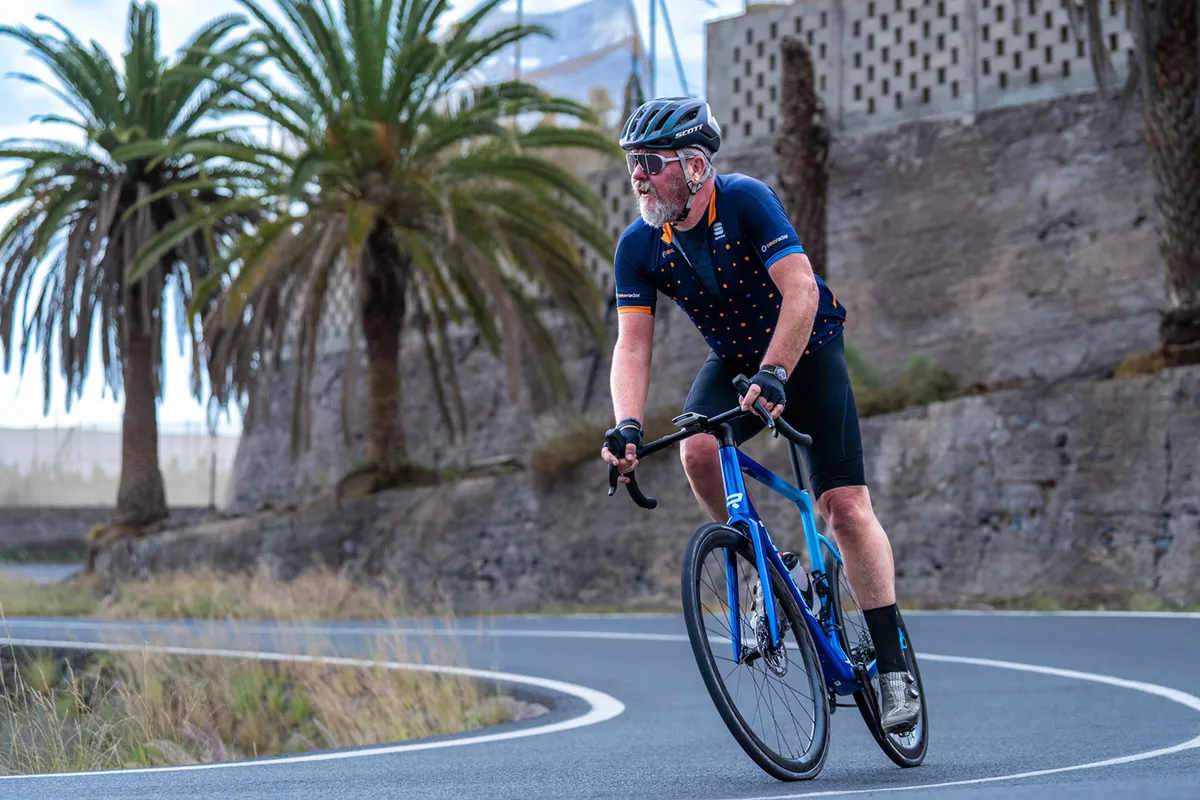
The 43/30t chainrings and 10-30t cassette combination is (on paper) a road-going setup, but the easiest 1:1 ratio meant I could keep pedalling on steep and loose climbs.
On the road, Rival AXS is a smooth-shifting, accurate and reliable choice.
The Terreno Dry tyre was perfectly suited to the dry, dusty trails of Tenerife. The knobbly tread bit well into pine-needle strewn trails, and dug in admirably to the volcanic sand too.
The grip through the shoulders in high-speed corners impressed, with the front tyre only on occasion scrambling for purchase through deep troughs of sand piling up mid-apex.

The tubeless-ready Levanto G carbon wheelset features a 23mm internal width. It shapes up both the gravel tyre and the excellent Corsa road tyre more generously than the nominal tyre sizes would suggest.
I would have liked to have run the Terrenos tubeless to exploit lower tyre pressures – instead, my test bike came fitted with tubes.
Riding at speed on sharp, rocky volcanic surfaces meant I and others in our small group experienced more than one pinch puncture.
Although running tubeless might be lighter and more efficient, I was impressed by how responsive and sprightly the Levanto G gravel-oriented wheels felt when shod with Vittoria’s superb Corsa rubber and tubes.
Ridley Grifn bottom line
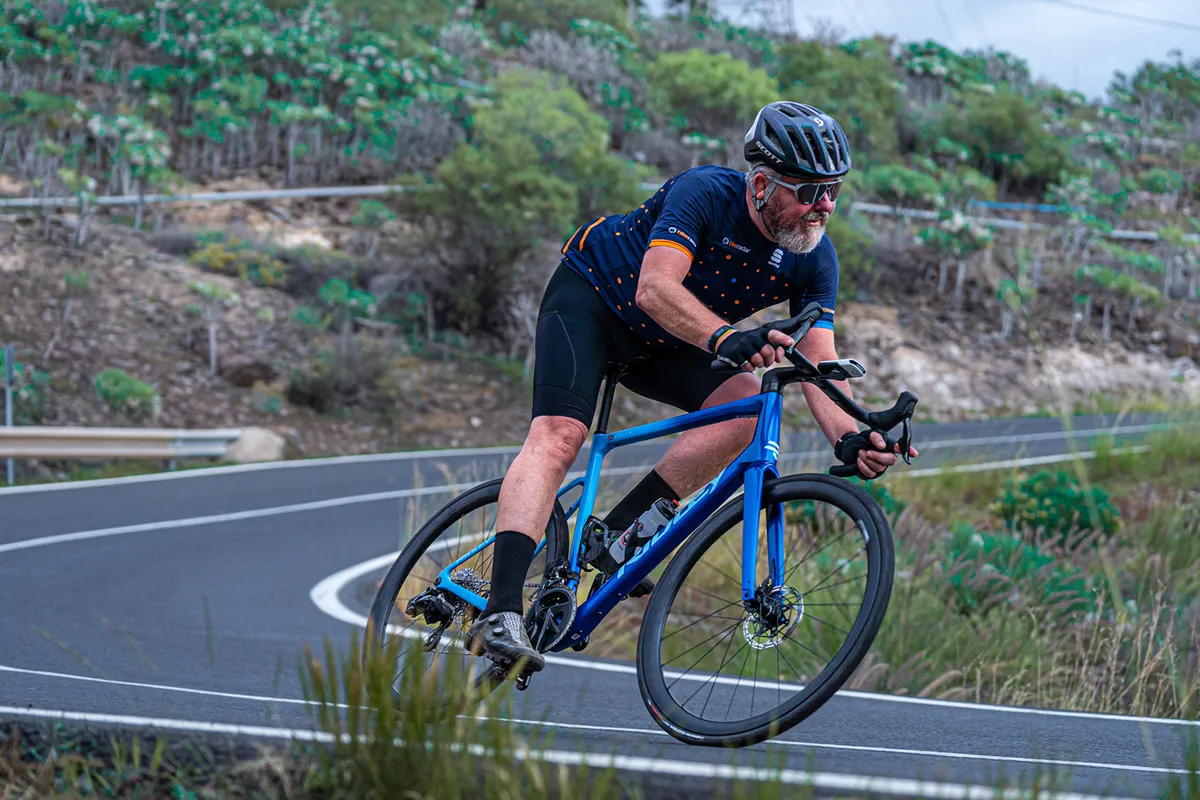
As a bike that demonstrates such a dual identity, it’d be very easy for the Grifn to be something of a jack of all trades and master of none.
However, the early indications are that Ridley has quite deftly balanced the geometry, ride comfort and handling to produce a bike that seems very competent at both road and gravel riding.
Check back for a full review of the Ridley Grifn in the coming months.
Ridley Grifn specifications
Gravel build

- Sizes: XS, S, M, L, XL
- Frame: Grifn carbon
- Fork: Grifn carbon
- Weight: 9.24kg (L)
- Shifters: SRAM Rival AXS eTap
- Front derailleur: SRAM Rival AXS eTap
- Rear derailleur: SRAM Rival AXS eTap
- Brakes: SRAM Rival hydraulic disc, 160/140 Paceline rotors
- Cranks: SRAM Rival AXS eTap 43/30
- Sprocket: SRAM Rival AXS eTap 10-30
- Chain: SRAM Rival 12-speed
- Wheels: Forza Levanto G carbon
- Tyres: Vittoria Terreno Dry TNT, 700 x 35c
- Stem: Forza Cirrus Pro Integrated Flared
- Handlebar: Forza Cirrus Pro Integrated Flared
- Seatpost: Forza Cirrus alloy-carbon
- Saddle: Selle Italia SLR Boost manganese
- Price (custom build): approx. £4,300
Road build

- Sizes: XS, S, M, L, XL
- Frame: Grifn carbon
- Fork: Grifn carbon
- Weight: 8.88kg (L)
- Shifters: SRAM Rival AXS eTap
- Front derailleur: SRAM Rival AXS eTap
- Rear derailleur: SRAM Rival AXS eTap
- Brakes: SRAM Rival hydraulic disc, 160/140 Paceline rotors
- Cranks: SRAM Rival AXS eTap 43/30
- Sprocket: SRAM Rival AXS eTap 10-30
- Chain: SRAM Rival 12-speed
- Wheels: Forza Levanto G carbon
- Tyres: Vittoria Corsa Tubeless-ready Graphene 2.0, 700 x 28c
- Stem: Forza Cirrus Pro Integrated Flared
- Handlebar: Forza Cirrus Pro Integrated Flared
- Seatpost: Forza Cirrus alloy-carbon
- Saddle: Selle Italia SLR Boost manganese
- Price (custom build): approx. £4,300
Product
| Brand | ridley_bikes |
| Price | 4300.00 GBP |
| Weight | 8.8800, KILOGRAM (L) - road setup |
Features
| Fork | Grifn carbon |
| br_stem | Forza Cirrus Pro Integrated Flared |
| br_chain | SRAM Rival 12 speed |
| br_frame | Grifn carbon |
| Tyres | Vittoria Corsa Tubeless-ready Graphene 2.0, 700 x 28c |
| br_brakes | SRAM Rival hydraulic disc, 160/140 Paceline rotors |
| br_cranks | SRAM Rival AXS eTap 43/30 |
| br_saddle | Selle Italia SLR Boost manganese |
| br_wheels | Forza Levanto G carbon |
| br_shifter | SRAM Rival AXS eTap |
| br_cassette | SRAM Rival AXS eTap 10-30 |
| br_seatpost | Forza Cirrus alloy-carbon |
| br_handlebar | Forza Cirrus Pro Integrated Flared |
| br_availableSizes | XS, S, M, L, XL |
| br_rearDerailleur | SRAM Rival AXS eTap |
| br_frontDerailleur | SRAM Rival AXS eTap |















